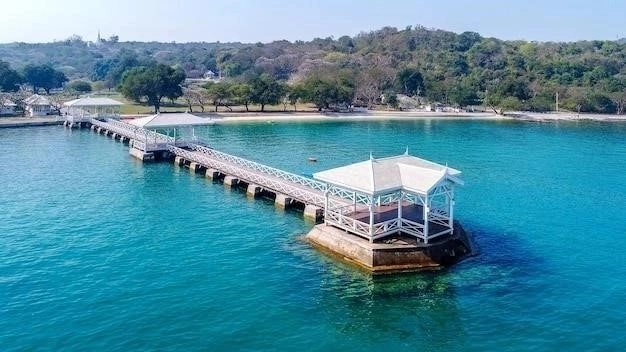Nestled on the eastern edge of South Mumbai, Sewri is a locality known for its industrial landscape. However, amidst the grey of factories and parked trucks lies a hidden gem ⸺ the Sewri Jetty. This unassuming jetty, extending into the muddy flats of Sewri Creek, transforms into a breathtaking spectacle every winter, playing host to thousands of migrating flamingos.

A Seasonal Spectacle
From November to March, Sewri Jetty becomes a vibrant canvas painted pink by the arrival of lesser flamingos. These elegant birds, with their slender bodies and distinctive pink plumage, migrate from as far as Siberia, making a stopover at the Rann of Kutch in Gujarat before arriving in Mumbai. The mudflats of Sewri Creek, rich in algae and other microorganisms, provide a bountiful feeding ground for these migratory birds.
The Allure of Sewri Jetty
The sight of thousands of flamingos congregating on the mudflats, their pink feathers reflecting the sunlight, is truly mesmerizing. The air fills with their calls, creating a symphony of nature that captivates visitors. Sewri Jetty offers a unique opportunity to witness these graceful creatures in their natural habitat, feeding, preening, and soaring through the air in unison.
Accessibility and Viewing
Sewri Jetty is easily accessible, located a short walk from the Sewri railway station on the Harbour Line. While the jetty itself may be inaccessible due to the ongoing construction of the Mumbai Trans Harbour Link, visitors can still enjoy excellent views of the flamingos from nearby locations. Sewri Fort is a popular alternative, offering panoramic views of the mudflats and the avian spectacle unfolding within.

Best Time to Visit
The ideal time to witness the flamingo spectacle at Sewri Jetty is two hours after low tide. During this period, the receding water reveals vast expanses of mudflats, attracting the flamingos to feed closer to the shore, offering clear and close-up views to onlookers. Tide timings are readily available online and in local newspapers.

Conservation Concerns
While Sewri Jetty provides a crucial feeding ground for migratory flamingos, their presence also highlights the importance of conservation efforts. The ongoing development projects and increasing pollution levels pose a threat to the delicate ecosystem of the mudflats. It is crucial to prioritize sustainable practices and responsible tourism to ensure the well-being of these beautiful creatures and the preservation of their habitat.
Tips for Visiting Sewri Jetty
- Carry binoculars or a spotting scope for a closer look at the flamingos.
- Wear comfortable walking shoes as some walking may be required to reach viewing points.
- Respect the environment and avoid littering.
- Maintain a safe distance from the birds and refrain from making loud noises that may disturb them.
- Check tide timings before your visit to maximize your chances of spotting the flamingos.
Conclusion
Sewri Jetty is a testament to Mumbais unique natural heritage, offering a glimpse of the citys often-overlooked biodiversity. The annual arrival of flamingos transforms this industrial landscape into a vibrant spectacle, captivating the hearts of locals and tourists alike. By promoting responsible tourism and conservation efforts, we can ensure that future generations can continue to marvel at this breathtaking display of natures beauty.
The Future of Sewri Jetty and its Feathered Visitors
The ongoing development of the Mumbai Trans Harbour Link (MTHL), while crucial for the citys infrastructure, presents both challenges and opportunities for the Sewri mudflats ecosystem. The construction activity has undeniably impacted the accessibility of the jetty and may have influenced flamingo numbers in recent years. However, it is crucial to adopt a balanced perspective and explore measures to mitigate potential negative consequences.
Mitigating Environmental Impact
The authorities involved in the MTHL project have acknowledged the ecological significance of the Sewri mudflats. Environmental impact assessments have been conducted, and mitigation measures are being incorporated into the project design. These measures include the creation of artificial habitats and nesting grounds to compensate for any potential loss of natural habitat. Additionally, ongoing monitoring programs aim to track flamingo populations and assess the long-term impact of the infrastructure project.
Sewri Jetty: A Catalyst for Eco-Tourism
The popularity of Sewri Jetty as a flamingo-watching destination highlights its potential as a hub for eco-tourism. By developing sustainable tourism practices and infrastructure, the local community can benefit economically while ensuring the protection of the fragile ecosystem. This includes promoting responsible waste management, providing educational tours that emphasize conservation, and encouraging local businesses to adopt environmentally friendly practices.
Community Engagement and Awareness
The conservation of Sewri Jetty and its avian inhabitants requires a collaborative effort involving local communities, government agencies, NGOs, and the tourism industry. Raising awareness about the ecological significance of the mudflats and the importance of responsible tourism is crucial. Educational programs, workshops, and citizen science initiatives can empower local communities to become active stakeholders in the conservation process.
Sewri Jetty: A Symbol of Mumbais Ecological Resilience
The annual arrival of flamingos at Sewri Jetty serves as a poignant reminder of Mumbais enduring connection with nature. It underscores the citys capacity to support biodiversity amidst its urban sprawl. By prioritizing sustainable development practices, promoting responsible tourism, and fostering community engagement, Sewri Jetty can continue to enchant generations to come with its breathtaking display of avian beauty.

Beyond the Spectacle: The Ecological Significance of Sewri Jetty
Sewri Jettys allure extends beyond its visual splendor. As a crucial stopover point along the Central Asian Flyway, the site plays a vital role in supporting the migratory bird populations that traverse this vast avian highway. The mudflats, enriched by the confluence of freshwater and seawater, teem with microscopic life, providing a crucial food source for the flamingos and a diverse array of other avian species.
A Biodiversity Hotspot
Sewri Jettys ecological significance extends beyond its role as a flamingo haven. The mudflats and surrounding mangrove ecosystems support a rich tapestry of life, including:
- Avian Diversity: Beyond flamingos, the site attracts a multitude of migratory and resident bird species, including gulls, terns, sandpipers, egrets, and herons, making it a birdwatchers paradise.
- Marine Life: The intertidal zone provides habitat for a variety of crustaceans, mollusks, and fish, contributing to the health of the local marine ecosystem.
- Mangrove Ecosystems: The surrounding mangrove forests act as natural buffers, protecting the coastline from erosion, filtering pollutants, and providing nursery grounds for various marine species.
Sewri Jetty: An Indicator of Environmental Health
The presence of flamingos and other migratory birds at Sewri Jetty serves as a bioindicator of the environmental health of the Mumbai coastline. The birds reliance on the mudflats for sustenance makes them particularly vulnerable to changes in water quality, pollution levels, and habitat degradation. Monitoring their populations and behavior patterns provides valuable insights into the overall health of the ecosystem.
Balancing Development and Conservation
As Mumbai continues to expand, balancing urban development with the conservation of its natural heritage remains a critical challenge. Sewri Jetty stands at the crossroads of this dilemma, prompting a crucial dialogue on how to sustainably manage and protect this vital ecological asset.
Integrated Coastal Zone Management
Implementing integrated coastal zone management (ICZM) principles is crucial for ensuring the long-term sustainability of Sewri Jetty. ICZM emphasizes a holistic approach, considering the interconnectedness of ecological, social, and economic factors. This involves:
- Participatory Planning: Engaging local communities, stakeholders, and experts in the planning and decision-making processes.
- Pollution Control: Implementing stringent measures to control industrial discharge and urban runoff that can degrade water quality in the mudflats.
- Habitat Restoration: Exploring opportunities for mangrove restoration and the creation of artificial habitats to compensate for any loss of natural areas.
Sustainable Tourism Practices
Sewri Jettys potential as an eco-tourism destination can be harnessed to generate economic benefits while promoting conservation awareness. This requires:
- Regulated Tourism: Implementing visitor management plans to prevent overcrowding and minimize disturbance to wildlife.
- Interpretation and Education: Providing interpretive signage and guided tours that highlight the ecological significance of the site and promote responsible behavior.
- Community-Based Tourism: Empowering local communities to participate in and benefit from eco-tourism initiatives, fostering a sense of stewardship over the natural heritage.
Sewri Jetty: A Legacy for Future Generations
Sewri Jetty stands as a testament to the resilience of nature amidst the urban sprawl. Its annual flamingo spectacle serves as a reminder of the interconnectedness of all living things and the importance of preserving natural spaces. By embracing sustainable practices, fostering community engagement, and prioritizing conservation, we can ensure that Sewri Jetty continues to captivate and inspire generations to come, reminding us of the beauty and ecological value that lie at the heart of our urban landscapes.










